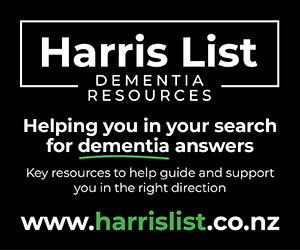Currently suffering from long-term pain, Grey Power national president, GAYLE CHAMBERS made it a priority to attend a Grey Power Marlborough seminar on pain relief. She thought it would be useful and she was right. It was! She shares her experience here.
From the seminar’s outset, it was made clear that pain medications aren’t the only way to deal with pain. Whilst helpful, other strategies can also provide relief.
Exercise was first cab off the rank. When we are in pain, we tend to shy away from doing anything we feel may aggravate it. However, having now completed a 10-week physiotherapy course I know that assessing one’s level of pain when exercising or stretching is important.
A pain level of 3-5, even though uncomfortable, won’t generally hurt you. Anything above that means the body is saying you are pushing it too hard and it can have a negative effect.
Exercise strengthens the muscles around painful joints, and they subsequently support the joint. Most forms of exercise are beneficial. It could be attending ‘sit and be fit’ classes, exercising in water or just walking to the letterbox and back – anything to keep joints warm and mobile.
Diet – it is important to maintain a balanced diet with plenty of fruit and vegetables. That’s not to say you can’t treat yourself now and then. However, be aware of the amount you are eating (especially treats) versus your level of exercise.
Fluid is a must and water is best. As we age, we need it even more because water keeps the body hydrated like no other form of liquid. It is essential for keeping muscles and joints lubricated.
I know some people find it difficult to drink large amounts of water so try using a sipper bottle then you can gauge how much water you have consumed in a day. Taking large sips shouldn’t make you feel bloated and you will be amazed how much your intake has been by the end of the day.
Pain killers are very useful for managing pain but be aware of what tablets you are taking and always ask about the long-term effects. Be wary of purchasing off-the-shelf pain killers to manage on-going pain. These may affect your prescribed medications (if any) and some may affect vital organs such as kidneys or the liver.
Furthermore, they may not be right for your particular type of pain and its cause. Your doctor is the best person to consult for long-term pain medication as he/she will know your history and may suggest alternate ways to manage your pain together with medication.
Never take anyone else’s pain-killers! They are prescribed just for them and could be harmful to a second party. If taking an off-the-shelf medication, Panadol or paracetamol is generally regarded as a safe pain killer to help dull pain, even if you are on other medication.
If in doubt, ask the pharmacist or doctor. Both medications are accumulative so taking the maximum dose allowed per the instructions on the packet, should do no harm and won’t be addictive. Examples:
- Non opioid (not addictive) e.g. paracetamol, aspirin or non-steroid anti-inflammatories
- Weak opioid (can be addictive) e.g. codeine, dihyrocodeine or tramadol
- Strong opioid (addictive) e.g. morphine, diamorphine or fentanyl.



